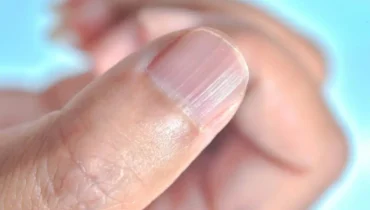📌 If you see this appearing on your lips, it is a sign of ca…

Posted 22 September 2025 by: Admin
Itching, burning, or tingling sensations on the face can signal more than just skin irritation. Cold sores—caused by the herpes simplex virus—are among the most common facial infections, affecting the lips, nose, or even the eyes. Understanding causes, triggers, and treatment helps manage outbreaks and limit transmission.
Facial herpes is a viral infection caused by herpes simplex viruses. HSV-1 is most often transmitted through direct contact with mucous membranes or objects contaminated with saliva. It is the primary cause of oral, labial, and ocular herpes (cold sores), and may occasionally cause genital herpes after oral–genital contact. HSV-2, meanwhile, is mainly sexually transmitted.
Primary infection typically occurs in early childhood (6 months–4 years), often through a kiss. In nine out of ten cases, the first infection goes unnoticed and remains latent. By adulthood, 70–90% of people have been exposed to HSV-1, but not all will ever develop cold sores.
Triggers for Herpes Outbreaks
Once infected, the virus remains dormant in nerve ganglia and can reactivate under certain conditions:
- Lowered immunity
- Severe fatigue
- Physical trauma
- Sun exposure
- Viral or bacterial infections
- Surgical procedures or illness
- Use of certain medications (e.g., corticosteroids, immunosuppressants)
Oral and Nasal Herpes
Cold sores (herpes labialis) affect about 20–40% of people. Outbreaks on the lips begin with tightness, itching, or discomfort, followed by clusters of fluid-filled vesicles. These are highly contagious. Within a few days, they crust over and heal without scarring.
Herpes may also appear around the nostrils, on the chin, or cheeks. Initial infections can be painful and severe.
- Gingivostomatitis herpetica (mainly in children): redness, swelling, painful ulcers inside the mouth, fever, drooling, and swollen neck lymph nodes.
- Herpetic pharyngitis (more common in adults): affects the throat and sometimes accompanies gingivostomatitis.
- Esophageal herpes: causes chest pain, fever, weight loss, and swallowing difficulties.
- Herpetic rhinitis: nasal blockage, vesicles near the nostrils, fever, and swollen lymph nodes.
After primary infection, the virus settles in cervical ganglia, reactivating periodically as recurrences. Frequency and severity vary among individuals.
From Cold Sores to Genital Herpes
Oral–genital contact can transfer HSV-1 from lips to a partner’s genitals (10–30% of genital herpes cases). The reverse transmission is also possible.
Ocular Herpes
Herpetic keratitis is the leading infectious cause of blindness in industrialized countries, with 60,000+ cases annually in France. Self-inoculation via fingers is common. Primary eye infections are often mild, but recurrences can damage the cornea, causing pain, redness, light sensitivity, tearing, and potential scarring. Prompt treatment reduces pain and visual complications.
Herpetic Whitlow (Finger Infection)
Fingers are easily infected through direct contact. Professions like dentists and nurses face increased risk. The finger becomes red and swollen, sometimes forming vesicular clusters resembling whitlow. Initial infections may involve fever and swollen underarm lymph nodes. Thumb-sucking children are particularly vulnerable. Touching a cold sore can spread the virus to fingers, which can then transfer it elsewhere (eyelids, ears, etc.). Hand hygiene is critical.
Other Possible Sites of Infection
Herpes can affect any skin area—torso, limbs, buttocks, or genitals—via:
- Self-inoculation (fingers spreading the virus)
- Close contact sports (judo, wrestling, rugby)
- Immunocompromised individuals (eczema, pregnant women, newborns, cancer, HIV).
Recognizing a Facial Herpes Outbreak
Warning signs may occur hours or days before an outbreak: tingling, burning, numbness, or localized pain, followed by small grouped blisters. Early antiviral treatment can shorten the episode.
Duration and Contagiousness
Lesions crust within 8–10 days. Severe outbreaks or scratching may leave scars. Antiviral therapy reduces healing time. A person is contagious from about three days before to three days after visible symptoms. Some carriers may spread the virus without ever showing signs.
See a doctor promptly at the first symptoms. Oral antiviral medications are effective for both acute and preventive treatment, reducing pain, intensity, and duration. Topical antiviral creams have limited proven benefit. Good hand hygiene after touching lesions is essential to prevent spreading the virus to other body parts.




















